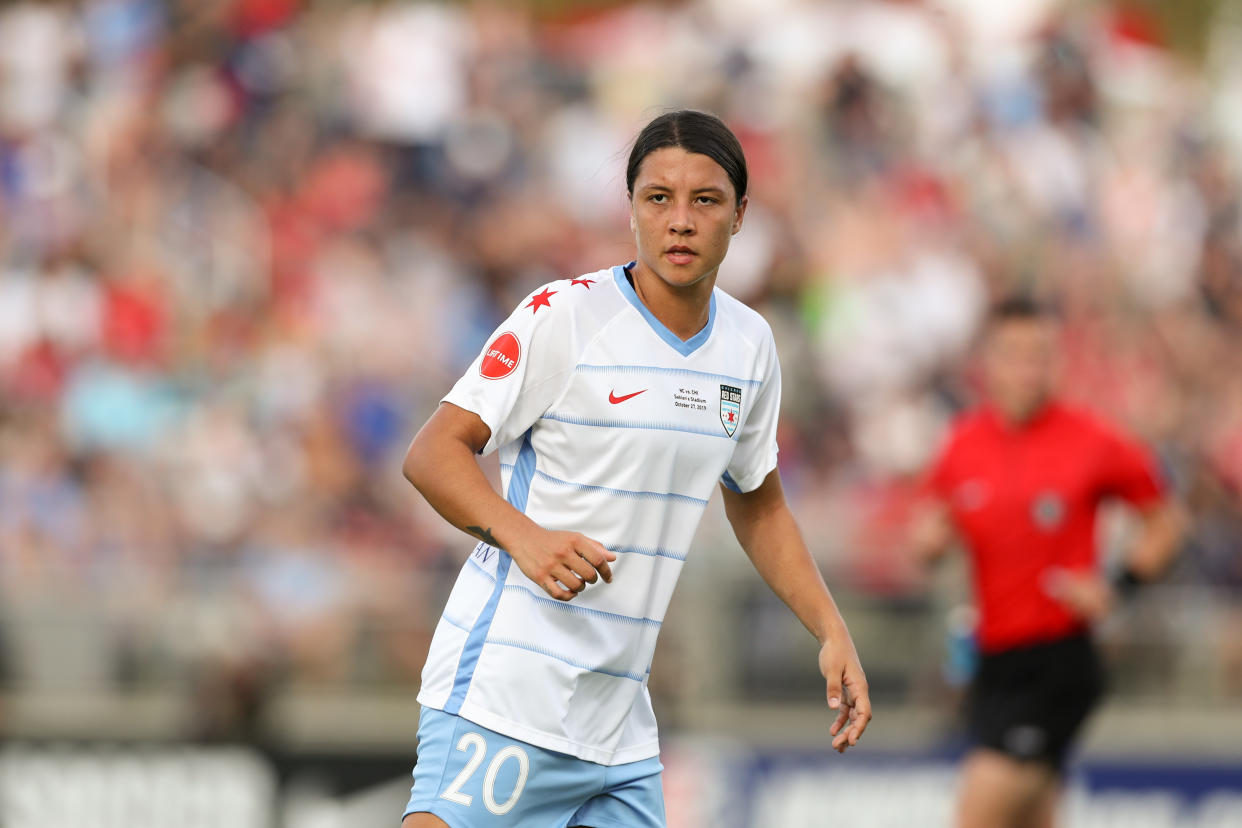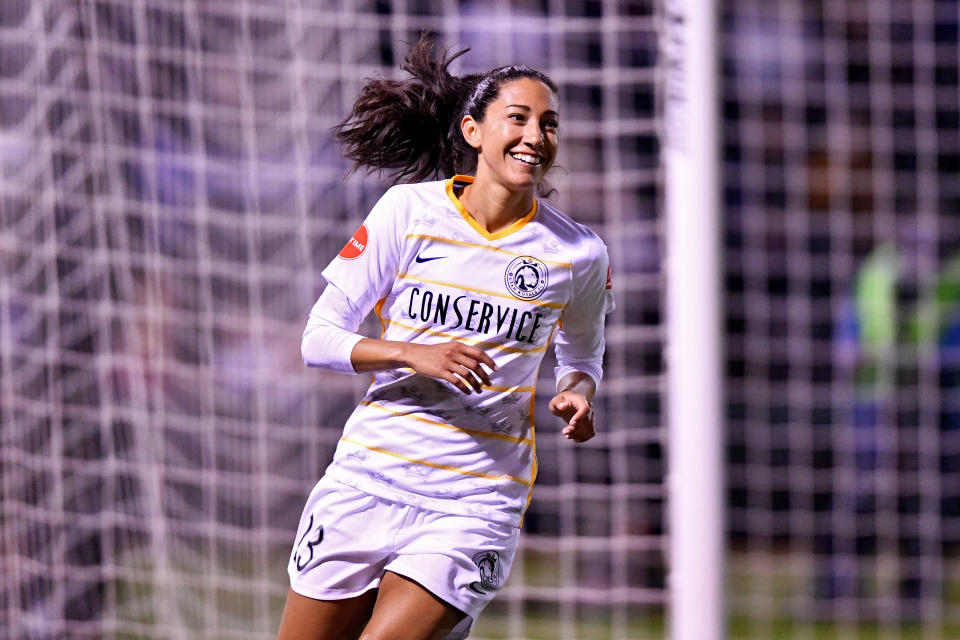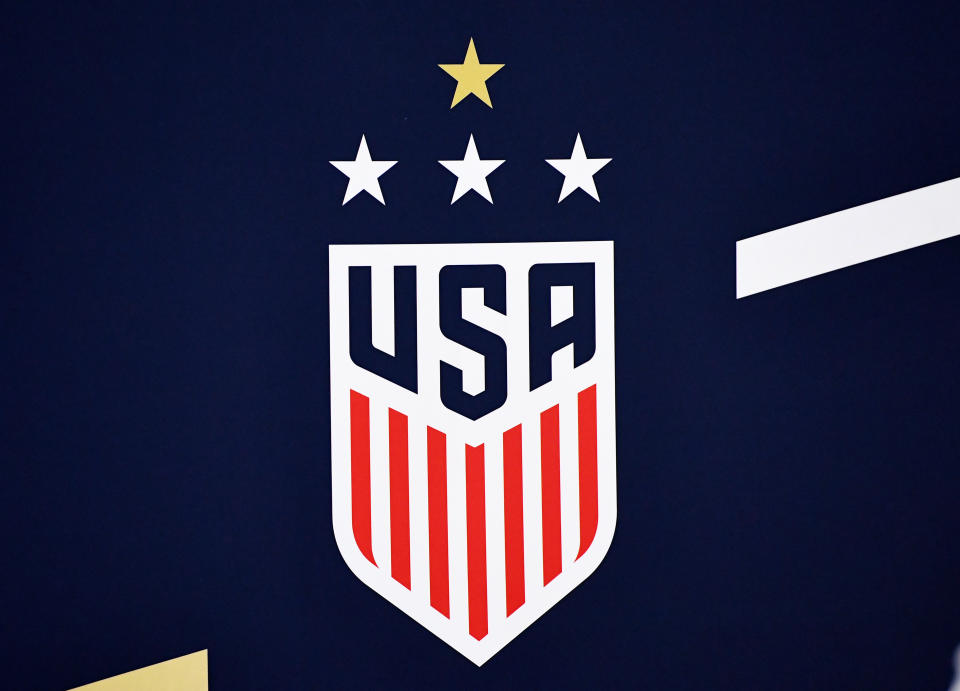Spending boost could usher in NWSL 2.0, but a showdown with U.S. Soccer awaits

It's been obvious to anyone paying attention: For the past few years, women's soccer has been on the rise across the world. Broadcast viewership is up, tickets are selling out, and sponsors are throwing money at the chance to partner with aspirational female athletes.
But as the sport becomes more competitive globally, the burden has been on the National Women's Soccer League to keep up. The American league would need to transition to a “version 2.0” – and sweeping changes for next season are designed to achieve just that.
“We have a desire to continue to be in the best in the world and that means standards are going to rise,” said Steve Malik, owner of the North Carolina Courage. “Who do you think everyone is gunning for anyway? From a talent standpoint, everybody's coming at us, and we're embracing these changes to give clubs more tools to raise their quality.”
The new rules will do everything from allowing stars to earn big paychecks to ensuring all players have year-round housing and long-term contracts. These steps on their own wouldn't transform the league, but together in a batch of changes, NWSL owners are hoping to push the league into its next era.
A new spending model to re-shape the NWSL
The surest sign that NWSL 2.0 has arrived comes from a new compensation model designed to upgrade the 7-year-old league from a fledgling startup to a contender on the world stage.
It starts with adding the ability for NWSL clubs to buy and sell players in the transfer market – but the changes will go a step beyond with a new mechanism called allocation money. Starting for the 2020 season, clubs can purchase up to $300,000 in allocation money to spend on players above the NWSL maximum salary of $50,000.
Clubs that miss the playoffs will be entitled to buy an extra $100,000. The NWSL hasn't announced that extra way of adding allocation money, but a source shared the rules with Yahoo Sports.
That influx of cash should fundamentally change the types of international players the NWSL can attract and retain, even while the league maintains a frugal business model aimed at sustainability. France's Amandine Henry and Scotland's Kim Little have been outliers in their willingness to leave European clubs to come to the NWSL – the more likely scenario is them leaving, just like Samantha Kerr did, for the bigger paychecks offered overseas.
“It's already allowed us to have conversations that a year ago I wouldn’t have even tried to open the door because we would've been so far away in what we could offer,” Utah Royals general manager Stephanie Lee told Yahoo Sports last month. “At least for the Royals, it's already allowed us to have better conversations.”

But those conversations aren't just with international players. Lee, who helped write the new rules on the NWSL competition committee with Reign FC owner Bill Predmore and Portland Thorns general manager Gavin Wilkinson, said allocation money also targets U.S. players.
While contracted USWNT players are locked into playing in the NWSL – none of them can leave the league in 2020 – the players on the national team bubble are free to consider offers in Europe. Those are players the NWSL needs to retain to maintain its level of quality.
Similarly, the NWSL has run into challenges keeping young draft picks as well. Hailie Mace and Julia Ashley, for instance, were drafted by Sky Blue FC for the 2019 season and decided to forgo the NWSL in favor of leagues in Sweden and Australia, respectively.
“The final piece is looking at the new draft picks coming up,” Lee said. “Our minimum salary was a third of what they could make as a rookie salary in Norway or Sweden, so we had to be realistic about wanting to retain those players as well.”
Carving the new path forward
The overhaul in the NWSL's compensation guidelines includes some components that may be less eye-popping but are just as important.
For the first time, clubs will be allowed to sign players to multi-year contracts, which is a step away from fear of folding and toward optimism for the future. Clubs expect to be around for years to come, and they can plan for the future with a roster of long-term players.
Housing limits have been removed and teams can provide year-round housing for players instead of forcing them to skip town as soon as the season ends. The housing limit was difficult to enforce anyway, and the change will allow players to live in and become part of the communities where they play full-time.
“I came into the league and I'm looking at these rules and I'm thinking, ‘There's a housing cap? Why?’” Malik said. “Having been an NASL owner, I can appreciate cost controls and the benefit of stability that brings, but you also can't be nonsensical. That needed to be fixed.”
A homegrown player rule is also in the works that will allow NWSL clubs to develop their own talent in academies without losing those players in the draft, sources tell Yahoo Sports. The rules aren't finalized but are expected to be in place by the 2020 season.
But some of the rules were harder to develop.
The criteria for players to be eligible for allocation money was criticized by some fans because the NWSL end-of-season awards were one of the metrics, and the 2019 selections were roundly mocked. Some NWSL sources, speaking off the record, said they asked league president Amanda Duffy to investigate why the league Best XI was so incongruent with what actually happened on the field.
[ Follow Yahoo Soccer on Twitter and Facebook ]
Players on the USWNT were also offended to see the rules contained a provision that explicitly prohibits allocation money from being used on national team players. Megan Rapinoe told Yahoo Sports last month that it is “so disrespectful and such a slap in the face to everything that we do to grow this sport in this country.”
The rules won't be set until the league finalizes its competition manual for the 2020 season. But they were never intended to be the end-all and be-all for the NWSL – they will evolve and adapt, just like the game of soccer itself.
“We were at a pivot point where we have to start thinking globally and thinking long-term,” Lee said. “This falls into the category of getting it started and getting it implemented, and then tweaking it as it needs to be tweaked.”
Some fans also worried that world-class players like Ada Hegerberg would not be eligible for allocation money because she had declined national team call-ups, one of the criteria for eligibility. But Hegerberg, if a team can afford her, would qualify.
The league's announcement failed to mention a provision where any player whose most recent contract exceeded the NWSL maximum salary would be eligible for allocation money. Three sources with access to the rules confirmed it, although an NWSL spokeswoman would not.
Indeed, sometimes the NWSL has trouble touting its own good news. But the changes in how players are treated and compensated are only part of the NWSL's push to version 2.0.
Sky Blue is trading a subpar college stadium for Red Bull Arena next year. The Washington Spirit will play half their games at the new Audi Field. A new team in Louisville will join the league in 2021. And sources tell Yahoo Sports that Sacramento could still join the NWSL for 2020, although nothing is final.
Positive changes are certainly afoot.
The U.S. Soccer factor
While NWSL owners realized that changes were needed to stay competitive in global soccer, there was another driving force behind the new compensation rules: convincing the U.S. Soccer Federation to keep supporting the league.
Since the NWSL's inception, U.S. Soccer has been the buttress keeping the league viable. The federation has supplied USWNT stars to the league by paying for those players' NWSL salaries so clubs didn't have to, and U.S. Soccer has been the league's operator, funding its front office operations.
But U.S. Soccer's management agreement with the NWSL is set to expire at the end of month, and by all accounts it will not be renewed. It's a step toward independence that the NWSL wants – the league owners will be responsible for their own front office operations and have autonomy over all decisions – but the NWSL isn't ready for a complete break from U.S. Soccer.

The league's owners have submitted a proposal to U.S. Soccer asking for upwards of $5 million per year in financial support on top of the federation paying the salaries of USWNT players, multiple sources told Yahoo Sports this week. U.S. Soccer has been reluctant to agree to such funding without concrete proof that the NWSL is raising its minimum standards and ensuring the league can develop domestic talent.
Asked last month about what drove the decision to approve the new compensation rules, Malik discussed all the obvious factors – competing with Europe, attracting and retaining talent, providing more stability for players – but he eventually talked about U.S. Soccer's relationship with the league, too.
“The truth is, we're a little bit over the front of our skis and yet we were willing to step up and make those changes,” he said. “In a world where we are dealing with U.S. Soccer and their relationship with the league, what we have done is a first step that needed to be done. It was the right thing to do, and we need their partnership moving forward to continue to make changes. What we have done is not enough.”
But decision-makers inside U.S. Soccer House may not be convinced.
U.S. Soccer's board of directors will meet this weekend to discuss the NWSL in a closed-door session, and multiple sources this week have told Yahoo Sports that it's unlikely the board will vote to approve the league's funding proposal and agree to pay the $5 million-plus requested.
Whether the board simply tables the matter to be revisited or rejects it outright, that would certainly be viewed as a setback by several NWSL owners, some of whom shared Malik's same sentiments with Yahoo Sports off the record.
“If they were to pull back on their support, it would be very, very concerning for the league, especially as we try to step out and do the right thing,” Malik said. “We were making a statement that these are minimum things we ought to be doing, and we'd like to do more but we have to have partnerships to do that.”
What happens with U.S. Soccer could be a fork in the road for the NWSL, but for now the league looks like it's on a better path forward.
Caitlin Murray is a contributor to Yahoo Sports and her book about the U.S. women’s national team, The National Team: The Inside Story of the Women Who Changed Soccer, is out now. Follow her on Twitter @caitlinmurr.
More from Yahoo Sports:

